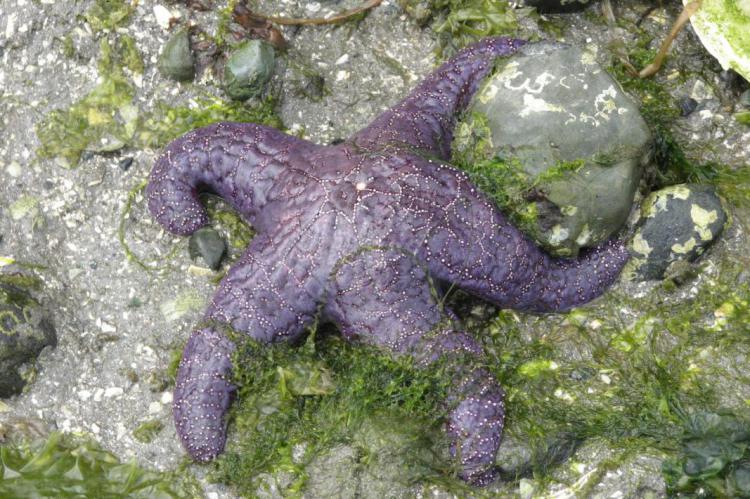Mysterious disease decimating Oregon sea star populations
Wasting syndrome causes creature’s body to disintegrate. Decimated populations may have far-reaching environmental impact.
A mysterious disease affecting sea stars has erupted along the Oregon coast. Sea star wasting syndrome causes the creature’s body to disintegrate, ultimately leading to death. Up to half or more of the creatures along the coast have been infected in just a matter of weeks.
Until now, Oregon was the one state along the U.S. West Coast essentially spared from the disease. In April, researchers estimated less than 1 percent or so of the purple ochre sea stars (Pisaster ochraceus) living within 10 sites along Oregon's intertidal zones were affected by the wasting disease. By mid-May that percentage had gone up slightly, and after that seemed to skyrocket.
"The percentages we saw last week, they were as high as 40 to 60 percent of the population that's showing signs of wasting," said Bruce Menge, a marine biologist at Oregon State University studying the disease.
Lesions and disintegration
The disease tends to progress from no outward signs to behavior changes in which the sea stars cross their arms and seem to collapse on themselves. White lesions then appear on the sea star's body that turn into holes; typically followed by the disintegration of skin around the lesion and the loss of a limb or several limbs. "We've seen a number of cases where all that's left is a puddle of their skeletal parts and a bunch of bacteria eating away at the tissue," said Menge. "It's a pretty gruesome thing to see."
The current outbreak was first reported in June 2013 along the coast of Washington by researchers from Olympic National Park. Since that report, die-offs have been documented from California to Alaska and even along the East Coast from Maine through New Jersey. The cause is unknown, though scientists are testing whether an underlying virus or bacteria is to blame. Environmental stress, such as water temperature or salt content may be a contributing factor, making the organisms more vulnerable to it.
Being keystone predators, their loss could have a far-reaching impact. By eating mussels on the low shores in Oregon, sea stars keep those populations in check. In addition to leaving a void in a finely tuned ecosystem, the loss of sea stars would also disrupt a seeming iconic shoreline organism.” The aesthetics of the rocky shore are going to be quite a bit less," Menge said. "They are charismatic beasts."
We've seen a number of cases where all that's left is a puddle of their skeletal parts and a bunch of bacteria eating away at the tissue.
—Bruce Menge, Oregon State University marine biologist.





























